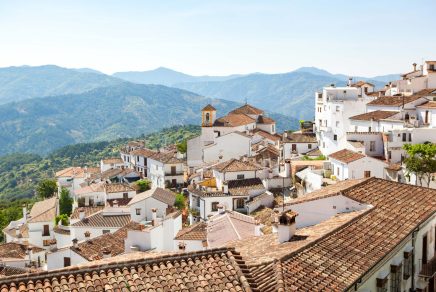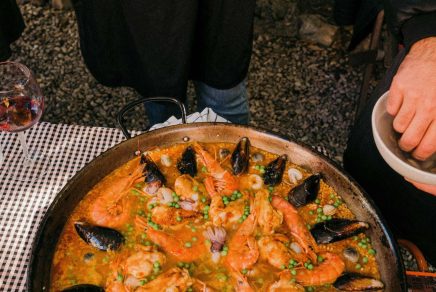Spain harbors an enchanting northern region known as Catalonia, which boasts a rich culinary heritage that blends Mediterranean flavors with mountain influences. Traditional dishes range from hearty stews to seafood specialties, reflecting the region’s diverse landscape. While Michelin-starred restaurants thrive, the soul of Catalan cuisine lies in rustic countryside eateries, where generations have perfected their craft.
Barcelona , the region’s capital, embraces both Spanish and Catalan culture, making it the perfect place to explore authentic flavors. Expect generous servings of legumes, chickpeas, vibrant vegetables, and an abundance of pork and fish.
From pa amb tomàquet to sardines on the barbecue, Catalonia highlights fresh, bold ingredients and time-honored traditions. These seven essential Catalan dishes will introduce you to the true taste of one of the most flavorful parts of Spain.
Pa Amb Tomaquet – one of the best Catalan dishes
Pa amb tomàquet, a true staple of Catalan cuisine, highlights the beauty of simplicity. Known beyond Catalonia as pan con tomate, this dish proves that great flavors come from fresh, high-quality ingredients.
Preparation starts with slicing rustic, day-old bread and rubbing it vigorously with ripe tomatoes to infuse the bread with flavor. A drizzle of local olive oil and a sprinkle of salt complete the dish, balancing the tomato’s natural sweetness with the richness of the oil.
You’ll find it everywhere—from homes to restaurants—often served as a tapa or alongside cured meats. Few traditional dishes are as versatile: it’s a popular breakfast item, a snack, or even a base for heartier toppings like jamón ibérico or anchovies. Simple, delicious, and unmistakably Catalan, this dish is a must-try.
Calçots – festive, traditional Catalan vegetable
Originally from Tarragona, calçots are a seasonal favorite in Catalan cuisine. These tender, sweet onions shine from January to March during calçotadas, lively feasts where friends and family gather to grill and feast.
Cooked over an open flame, calçots develop a charred outer layer while staying juicy inside. Diners peel away the blackened skin and dip the onion in salsa romesco, a rich sauce made with tomatoes, garlic, almonds, hazelnuts, and dried red peppers. Eating this dish is a hands-on experience—expect messy fingers, laughter, and possibly a bib!
Few Catalan families miss the chance to enjoy this Catalan classic, often accompanied by local wine. Though grilled vegetables remain a summer staple, nothing compares to the communal joy of a calçotada, where traditional dishes and festive spirit come together.
Embotits – a classic of Catalan cuisine!
Catalan food wouldn’t be complete without embotits, the region’s answer to charcuterie. The dry, warm climate of Catalonia creates the perfect conditions for curing meats, making embotits a cornerstone of Catalan cuisine.
Among the many varieties, fuet stands out as a Catalan classic. This thin, dry-cured salami has a slightly peppery taste and a firm texture. It’s a popular snack, often enjoyed with bread and cheese or as an appetizer before larger meals.
Barcelona’s markets offer a glimpse into this rich tradition. Stalls showcase beautifully aged sausages, inviting visitors to sample different versions.
Esqueixada – if you’re still wondering what are traditional Catalan dishes!
Esqueixada, one of the freshest traditional dishes in Catalan cuisine, is a vibrant salad that highlights the flavors of salted cod. Its name comes from the Catalan verb esqueixar, meaning “to tear,” referring to the way the cod is shredded by hand rather than chopped.
Salt curing played a crucial role in Catalan food long before refrigeration, allowing families to preserve fish. Over time, this necessity evolved into dishes like esqueixada, which pairs the delicate, flaky fish with ripe tomatoes, onions, and a light olive oil and vinegar dressing.
This Catalan classic is especially popular on hot summer days, when its bright, tangy flavors offer a refreshing contrast to a heavier dish. Many families add seasonal vegetables to personalize the recipe, but the essence remains the same—simple, fresh ingredients coming together in a perfect harmony of taste.
Anchovies – an iconic Barcelona food
Anchovies may be divisive worldwide, but in Catalonia, they’re a national treasure. Far from the overpowering tinned versions found elsewhere, anchovy dish are often served fresh—grilled, pan-fried, or marinated in vinegar to enhance their delicate flavors.
Preservation is also key in Catalan cuisine. Salt curing intensifies the anchovies’ umami-rich taste, making them a prized ingredient in many traditional dishes. Whether eaten alone or paired with tomato bread, their deep, savory essence adds complexity to any meal.
Even if you’re skeptical, trying local anchovies in Barcelona might just change your mind. And if you’re curious, the Catalan name for anchovies is anxoves!
Fideuà – a top Catalan fish dish
Inspired by Valencia’s famous paella, fideuà is a Catalan version that swaps rice for vermicelli noodles. The noodles are toasted in the pan before absorbing a flavorful seafood broth, giving the dish a nutty, rich depth. Prawns, squid, and mussels are common toppings, turning fideuà into a seafood lover’s dream.
Though paella dominates tourist menus in Barcelona, authentic fideuà is a bit harder to find. Avoid the places with picture-heavy menus and venture into local spots where this Catalan classic dish is made with care, just as it should be.
Escalivada – one of the most typical Catalan dishes
A true Catalan classic, escalivada takes its name from the Catalan verb escalivar, meaning “to cook in ashes.” This traditional cooking method involves grilling vegetables like eggplants, bell peppers, onions, and tomatoes over an open flame until they develop a smoky, charred exterior.
Once softened, the vegetables are peeled, sliced, and drizzled with high-quality olive oil and sea salt. Simple yet bursting with flavor, escalivada is one of the most essential traditional dishes in Catalan food.
In Barcelona, it’s commonly served alongside grilled meats, paired with fish, or spread on rustic bread. Few Catalan families go without it, especially during hot summer days, when its light, smoky flavors make it the perfect seasonal dish.
What is the most famous dish in Barcelona? Try these other options:
- Arròs negre – Black rice dish with squid ink and seafood.
- Boles de picolat – Catalan meatballs in a rich tomato sauce.
- Coca de recapte – Savory flatbread topped with vegetables and fish.
- Crema catalana – Caramelized custard dessert, similar to crème brûlée.
- Fricandó – Slow-cooked beef stew with mushrooms and white wine.
- Panellets – Almond-based sweets, traditionally eaten on All Saints’ Day.
- Tortell de Reis – King’s cake with marzipan, eaten on Epiphany.
- Suquet – Catalan fish stew with potatoes and saffron broth.






